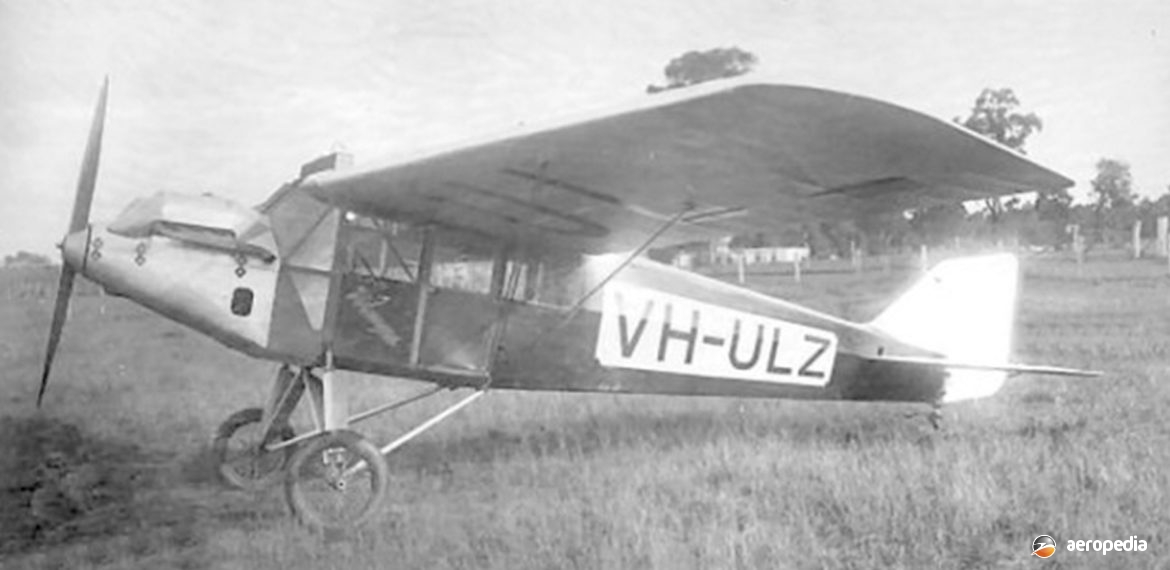Photograph:
Jones Wonga VH-ULZ (c/n 1) at Quakers Hill, NSW (Frank Walters collection)
Country of origin:
Australia
Description:
Two-seat light touring aircraft
Power Plant:
One 67 kw (90 hp) Curtiss OX-5 eight-cylinder VEE liquid-cooled engine
Specifications:
- Max speed at sea level: 180 km/h (112 mph)
- Stalling speed: 64 km/h (40 mph)
- Rate of climb: 183 m/min (600 ft/min)
History:
Leslie John Robert Jones, in conjunction with Dr N P Boulton, in 1927 commenced the design and construction, and later testing, of the first monoplane built in Australia. The Wonga, also known as the Jones Monoplane, was of welded steel tubing with fabric covering. During the years before World War II Jones was quite prolific in the area of aviation, designing, developing and building a number of aeroplanes, including the Centenary Racer.
Named Wonga, the aeroplane was built during 1929-1930 and was completed on 16 April 1930. It was taken to Quakers Hill, west of Sydney, NSW, where, due to a faulty magneto and an accident whilst taxiing, when it ran into a rabbit warren, the first flight was delayed until 4 June 1930. This first flight was made to Richmond, NSW and return. This machine, VH-ULZ (c/n 1), was registered on 13 September 1929, Certificate of Registration No 323 being issued to Dr N P Boulton of Ryde, NSW. However, on 13 August 1930 a severe squall struck the area where it was parked, lifting the machine and carrying it some 137 m (450 ft), causing extensive damage. The Wonga was subsequently rebuilt, this time being fitted with an Australian designed and built 86 kw (115 hp) Harkness Hornet engine. Test flights resumed on 10 April 1932. Plans were underway at about this time to fly the aircraft to New Zealand but these were shelved.
On 5 June 1932 a Mr R Mitchell as pilot, with Mr Jones on board, left Quakers Hill for Bourke, NSW in the Wonga. However, the engine failed near Wellington in western New South Wales necessitating a forced landing at Stuart Town. On this occasion the propeller and a wheel were damaged. Further testing resumed in preparation for the flight to New Zealand.
After successfully completing about 100 hours of flying, the aircraft crashed during a short test flight at Quakers Hill on 16 June 1932. Eyewitnesses observed the aircraft to bank steeply before diving to the ground, causing fatal injuries to both occupants. A Coronial Inquest was held on 5 July 1932, the investigators reporting their conclusion that the accident had resulted from low flying and bad weather. Subsequently TDJ Leech, lecturer in civil engineering at the University of Sydney, built a scale model of the Quakers Hill area and tested it in the GA Taylor memorial wind tunnel at that institution. From these tests he concluded that the aircraft probably encountered severe turbulence when the loss of control occurred.

